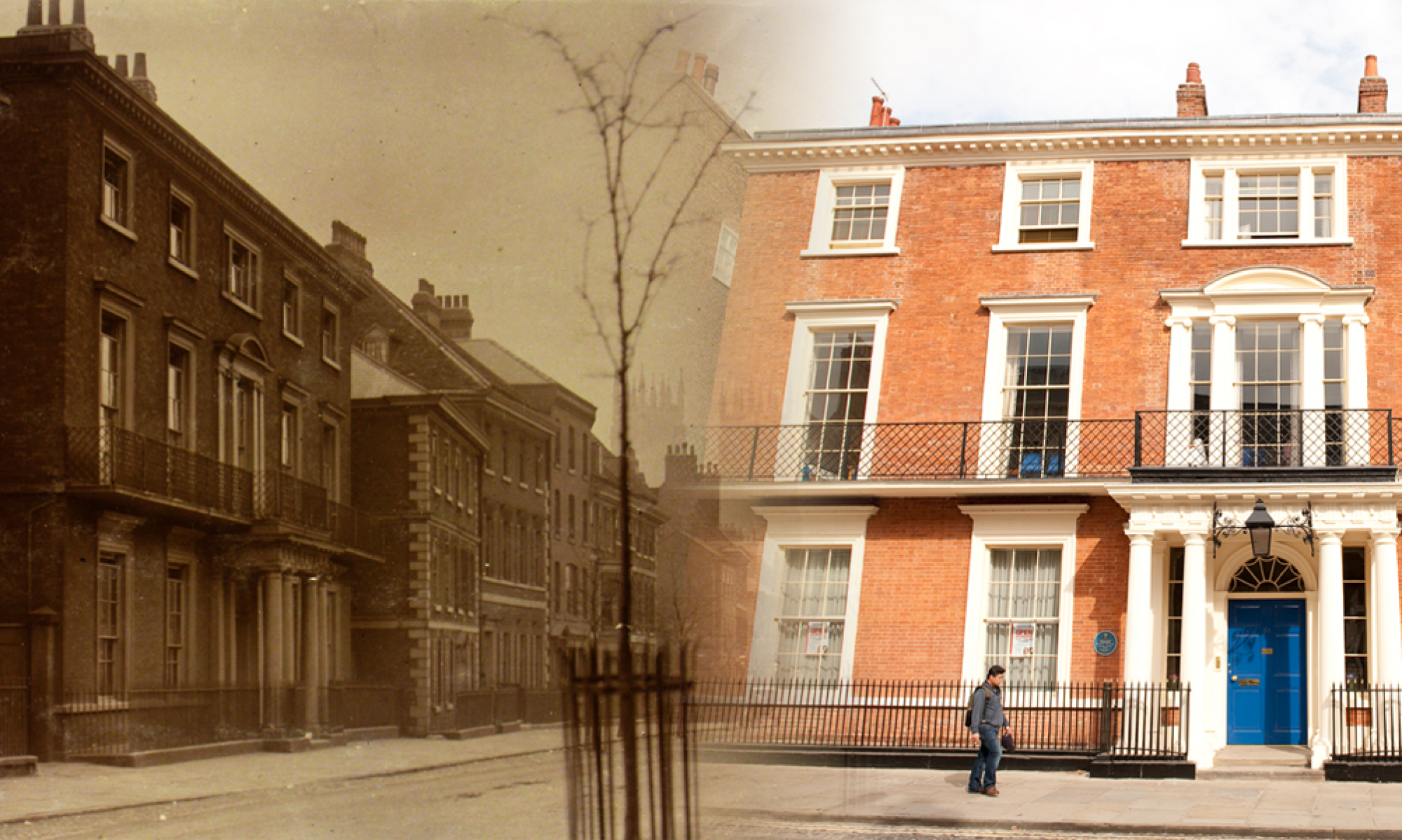It’s really good to hear about the West Bank Park Heritage Project (http://www.yorkpress.co.uk/NEWS/11029965.Heritage_centre_and_community_cafe_plan_for_York_park/?ref=rss), particularly as the Backhouse family had Bootham connections. The James Backhouse who first set up the nursery sent his son, also called James Backhouse, to York Friends Boys School in Lawrence Street between 1834 and 1841 (the school in Lawrence Street moved to Bootham in 1846, and later became known as Bootham School). The younger James Backhouse sent his sons, James and William, to Bootham (James between 1874 and 1878, and William between 1876 and 1880).
Photograph: James Backhouse, born 1825, at York Friends Boys School 1834-41.
The youngest James Backhouse (grandson of the first James Backhouse) wrote an obituary for his father, James Backhouse (son of the first James Backhouse) in ‘Bootham’ magazine in May 1903, and it talks about everything from York’s first station to an underground cavern! Here are some extracts…
“On the introduction of a railway into York in 1839 the business premises were transferred to Fishergate, and later still to their present position at Holgate, one mile away. The original Passenger Station building, which may be spoken of as little more than a wooden shed, outside the City walls, was, in a very brief time rebuilt within the walls upon the old garden site. This new erection, when in the course of time a further new and enlarged station was required, became the North Eastern Railway offices. It is said that when the first station was opened, one porter attended to all the luggage and issued all the tickets. Today about 450 officials and porters are required to cope with the traffic of the seven different railway companies which run their trains to York.”
“About 1859 the careful observations made during his previous botanical excursions bore fruit in another way. He constructed in the Nurseries his well-known imitation Mountain Tarn and surrounding crags, on purpose to shew how Alpine plants might be artificially cultivated. His success in the cultivation of these plants was largely due to a scientific knowledge of soil requirements and other local conditions necessary to the growth of each species. As pioneer of a new departure in Horticulture the fame of his work soon spread, and hundreds visited York to witness the novel sight of this Alpine model, correct in every detail, and no mere accumulation of material.”
“Another monument to his memory at York Nurseries is an underground cavern, so arranged and artificially lighted that filmy ferns, which are by no means easy subjects to deal with, flourish there in great perfection; though denizens of various parts of the globe.”
Good luck to the West Bank Park Heritage Project!
- James Backhouse’s obituary is contained in ‘Bootham’ magazine, Vol I, p280-284.
- The photograph is taken from an album presented in Silvanus Thompson in 1874, held in Bootham School Archives.


The quotes below are two of many quotes which indicate Thomas Backhouse brother of James Backhouse co owned and managed the Backhouse Nursery York. Thomas Backhouse managed it’s thriving development for many years.
The first quote below refers to the Backhouse Nursery as Mr Thomas Backhouse’s nursery establishment.
The second quote tells us James Backhouse felt he could not manage to purchase and run the nursery without his brother Thomas’s help.
James Backhouse was away in Australia and Mauritius and South Africa for 10 years 1831 to 1841, where
James Backhouse pursued his interests in plant hunting and his calling to missionary work. He is also known to have traveled to Norway, Ireland, Wales, Scotland and across Europe both before and after his Australian trip, curtailing the time he spent at the York Nursery, however the Nursery thrived and developed under Thomas Backhouse’s management.
Floriculture Magazine 1839 ‘York. – Backhouse’s Nursery. – … Mr. Backhouse’ (Thomas Backhouse) having removed the whole of his establishment, to what was formerly Mr. Rigg’s nursery, on the Selby road, a short distance from York. Here we noticed several new and interesting plants raised from Australian seeds, sent home by Mr. Jas. Backhouse.'(James Backhouse returned home 1841)
yorkstories.co.uk/histories/york-early-nurserymen-telford-backhouse-1/
The web site confirms James Backhouse was absent for long periods of time.
‘James Backhouse felt the nursery business at Tanner Row was too large for him to manage alone. His brother Thomas agreed to go into partnership with him. They took over the Telford nursery in May 1816.
The nursery business at Tanner Row flourished, despite the departure of James Backhouse in 1831 on Quaker missionary work. He traveled to Australia, and after ten years returned, via Mauritius and South Africa. His absence perhaps helped, rather than hindered, as he sent back exotic plants and seeds to the York nursery, many of them mentioned in the horticultural journals of the time as new arrivals of great interest.
A glimpse of the impressive set-up at Tanner Row comes from a letter written by the Backhouses’ gardener, Henry Bains, on 4 December 1827. He describes the plant-raising facilities: ‘The three cisterns in three of their houses are built with brick and Roman cement, and are 24 ft. long, 1 ft. 10 in. wide, and 2 ft. 9. in. deep, and are all heated by one boiler, the flue, to which is continued through the houses, and gives out a considerable quantity of heat.’